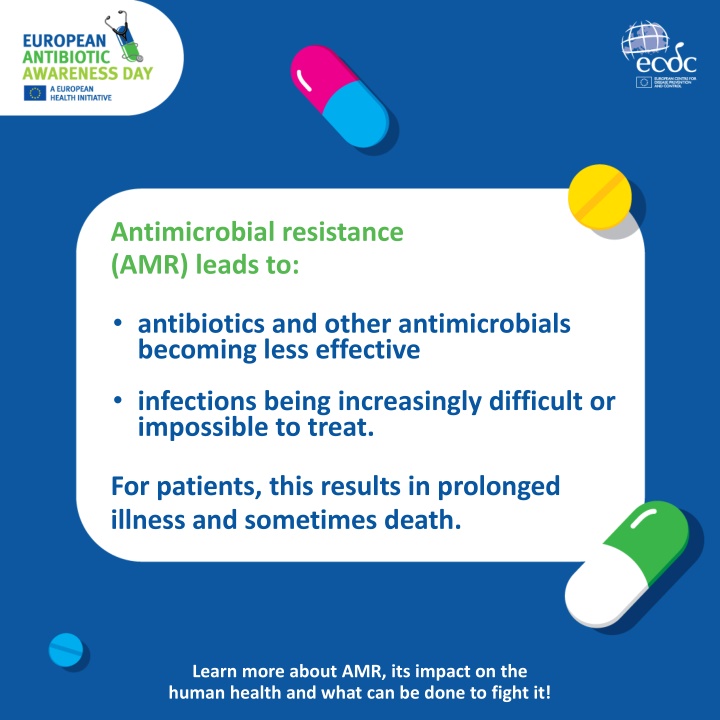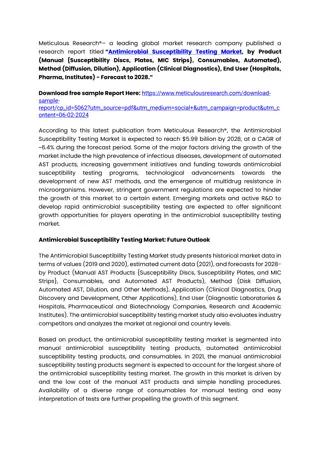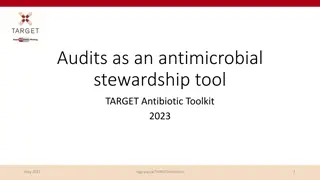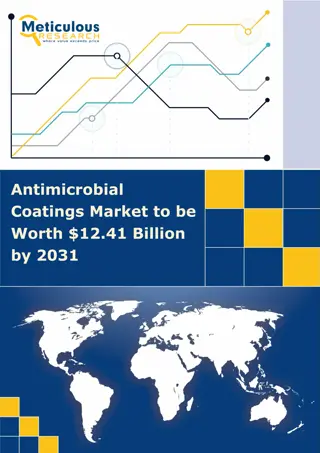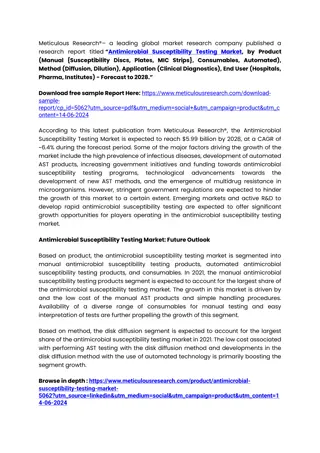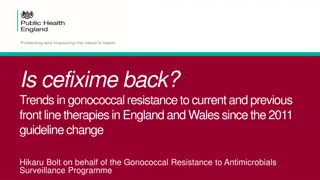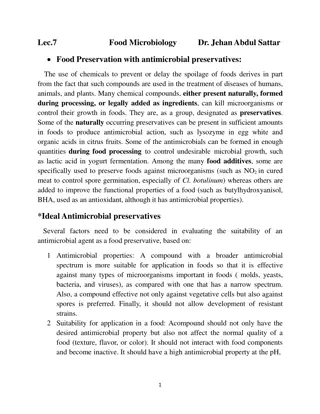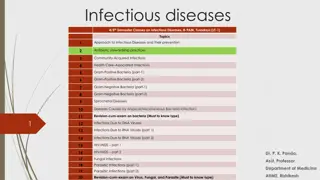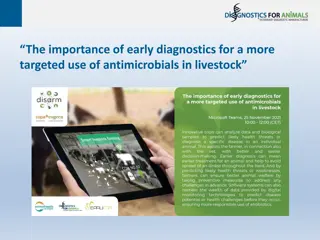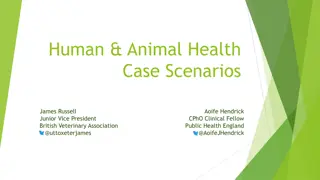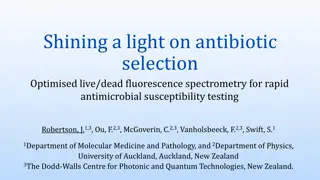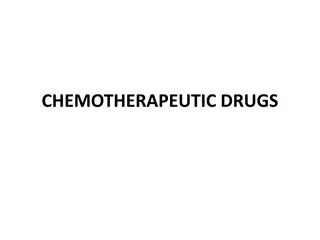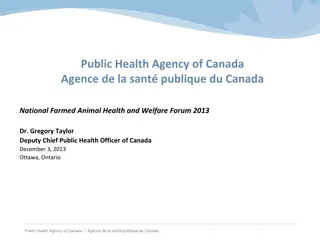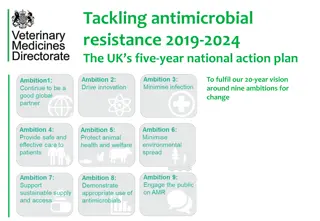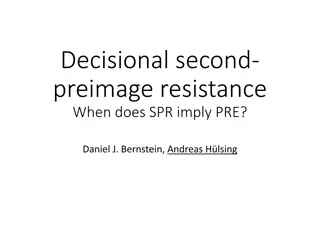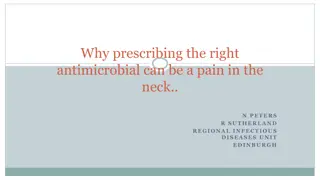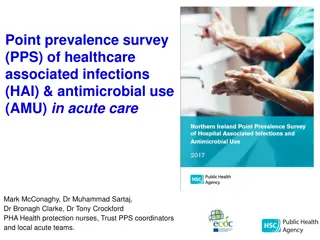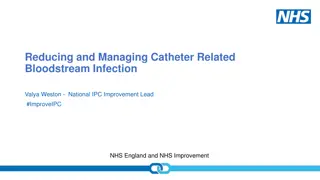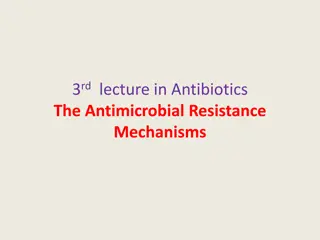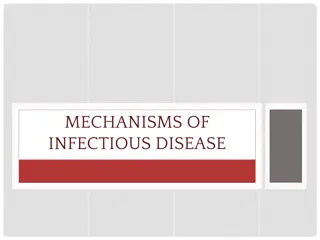Antimicrobial Resistance (AMR) Impact
Antimicrobial resistance (AMR) poses a global health threat, leading to ineffective antibiotics and difficult-to-treat infections. Addressing AMR requires urgent actions to prevent prolonged illness, increased mortality rates, and economic burden. Learn about the causes, consequences, and strategies to combat AMR, including prudent antimicrobial use, infection prevention, and novel alternatives. Explore EU targets for reducing antibiotic consumption and bloodstream infections by 2030.
Uploaded on Feb 16, 2025 | 0 Views
Download Presentation

Please find below an Image/Link to download the presentation.
The content on the website is provided AS IS for your information and personal use only. It may not be sold, licensed, or shared on other websites without obtaining consent from the author.If you encounter any issues during the download, it is possible that the publisher has removed the file from their server.
You are allowed to download the files provided on this website for personal or commercial use, subject to the condition that they are used lawfully. All files are the property of their respective owners.
The content on the website is provided AS IS for your information and personal use only. It may not be sold, licensed, or shared on other websites without obtaining consent from the author.
E N D
Presentation Transcript
ECDC NORMAL Antimicrobial resistance (AMR) leads to: antibiotics and other antimicrobials becoming less effective infections being increasingly difficult or impossible to treat. For patients, this results in prolonged illness and sometimes death. Learn more about AMR, its impact on the human health and what can be done to fight it!
ECDC NORMAL Antimicrobial resistance (AMR) is a global health threat. How did we get here? Inappropriate and excessive use of antibiotics and other antimicrobials in humans, animals and agriculture. Poor infection prevention and control (IPC) practices in healthcare settings. Learn more about AMR, its impact on the human health and what can be done to fight it!
ECDC NORMAL Antimicrobial resistance (AMR) threatens humans, animals and the environment, as bacteria and other microorganisms can spread within and between all sectors. This is why AMR requires integrated interventions from multiple sectors, known as the One Health approach. Learn more about AMR, its impact on the human health and what can be done to fight it!
ECDC NORMAL Urgent actions need to be taken to address antimicrobial resistance (AMR) to avoid: prolonged or untreatable infections, increased death rates, increased burden on healthcare systems, increased economic burden. Learn more about AMR, its impact on the human health and what can be done to fight it!
ECDC NORMAL EU ANTIMICROBIAL RESISTANCE (AMR) TARGETS BY 2030: Reduce by 20% the total consumption of antibiotics in humans. At least 65% of the total consumption of antibiotics in humans belongs to the Access group of antibiotics. Reduce by 15% the total incidence of bloodstream infections with meticillin-resistant MRSA Staphylococcus aureus. Reduce by 10% the total incidence of bloodstream infections with third-generations cephalosporin-resistant Escherichia coli. Reduce by 5% the total incidence of bloodstream infections with carbapenem-resistant Klebsiella pneumoniae. There are recommended AMR targets for each EU Member State. Find out how your country is doing!
ECDC NORMAL Antimicrobial resistance (AMR) is a global public health threat. To fight AMR, countries must: Ensure measures to support the prudent use of antimicrobials in healthcare settings, long-term care facilities, and community Strengthen infection prevention and control (IPC) in healthcare settings and long-term care facilities Promote IPC measures and policies in communities Promote the development of and accessibility to novel antimicrobials and alternatives to antimicrobials. Learn more about AMR, its impact on the human health and what can be done to fight it!
ECDC NORMAL In hospitals alone, healthcare-associated infections cause more deaths in Europe than any other infectious disease under surveillance at ECDC. Learn more about how infection prevention and control practices in healthcare settings can reduce the number of healthcare-associated infections!
ECDC NORMAL Vaccines play an important role in the fight against antimicrobial resistance (AMR). By stopping the spread of infections, they help to reduce the number of antibiotic prescriptions - meaning bacteria develop less resistance to antibiotics. Help keep our antibiotics working by making sure that you and your family are up to date on your vaccinations! Learn more about the benefits of vaccination on: vaccination-info.europa.eu Learn more about AMR and how to fight it.
